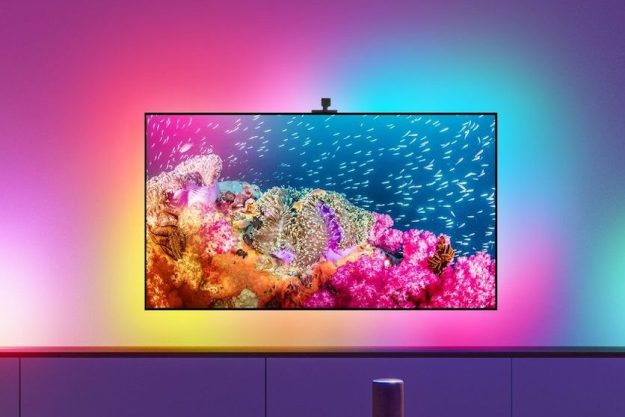
“Lighting is going to be about more than light,” said Beth Comstock, President and CEO of GE Business Innovations, at a panel the company hosted in New York City Monday morning. “It’s pretty exciting to think that something you’ve taken advantage of for the past 100 years is being reborn.”
Thanks to integrated sensors that can detect key information about their surroundings, tomorrow’s light bulbs will be vastly more intelligent than the bulbs you’ve got buried in a drawer in your kitchen. They’ll forecast the weather, improve parking in cities, heighten security, and facilitate communication. They’re boldly going where no light bulb has gone before.
“You can make those brilliant machines do much more, be much smarter, and basically help businesses work better,” Comstock said. “GE has been working hard over the last four years to bring this to the industrial world.”
Up to 50 percent of consumers will adopt LEDs over the next five years, Comstock explained, and adoption will be even greater for businesses and municipalities. The conversion to LED — ostensibly something that saves us money — is a gateway to the intelligent home, she said. Sweeping installations in San Diego, California and Jacksonville, Florida, point the way to the future.
Over 4,000 LED lights have been rolled out across San Diego already, explained David Graham, Deputy Chief Operating Officer for the city. Sensors in the GE bulbs and the company’s Predix technology will facilitate security and improve parking across the city. And yes, they’ll still help the bottom line.

Since people are likely unaware that the sensors exist in street lights, the city is able to collect “more pure,” more accurate data, Graham said. “It’s going to be useful for the consumer…. this will be something they’ve never had and never seen before.”
“The response has been pretty tremendous so far,” he added.
People will be able to transform their behavior based on the info the city will collect, he said. But will that be a security nightmare? Will street lamps suddenly know where you are and what you’re up to? Will that lamp you’re parked under issue you a ticket if you overstay your welcome? Both GE and Qualcomm insist that privacy will not be a concern.
“This is less The Matrix and more The Truman Show — without the dome.”
“You have to work with your partners and be quite clear as to what the concerns are and build the right kind of technology that preserves the right to privacy,” Comstock said. “You need a flexible system.”
“This is less The Matrix and more The Truman Show — without the dome. Where your environment understands you and you understand it. We see this opportunity as really changing the quality of life in our city,” said Graham.
Jacksonville is about to begin a similar roll out, though the city has yet to begin the infrastructure overhaul that San Diego is in the middle of.
“We are just this next year going to be entering into a multiyear conversion of our street lights,” explained Jim Robinson, Director of Public Works for the city of Jacksonville.

A few downtown streets that have been “nagging” in terms of enforcement and turn-over of spots have been selected for the pilot program. The city plans to fix that … with light bulbs. Jacksonville also aims to cut the power bills as dramatically as those in San Diego.
“I want to ensure that around the big city we serve, those big issues that really need a fast response, that we know about it so we can respond. That’s… where we are with this technology, and very anxious to get started with the pilot,” Robinson said.
But GE’s plan stretches beyond the streetlights in the city and into businesses, shopping malls, and even your home. A partnership with Qualcomm, also unveiled at the New York City event Monday morning, means a different type of technology embedded in a bulb, which alters the light from the bulb itself.

“Where are people spending their time? What items are they finding?” he asked. By pinpointing their location in a store using this technology, a business can better understand its shoppers. And imagine what it could do for you home: The lights in the kitchen could come on when they sense you’re nearby (because your nose is glued to your smartphone, of course), or the drapes could slide shut if you sit down and turn on the lamp near the TV. Voila: The Internet of Things!
GE also announced a partnership with Apple’s HomeKit, bringing its Align technology — which can alter the hue of light from a bulb — to that platform.
This type of technology may seem futuristic, but it’s also something savvier, younger consumers are just coming to demand.
“Connectivity is just the baseline for the younger generation,” explained Graham. “Connectivity is an absolute imperative. It’s just expected.”
Editors' Recommendations
- Nanoleaf upgrades its music-syncing skills, launches new lighting products at CES 2024
- Are smart lights bulbs worth it?
- GE Lighting launches colorful, customizable rope lights with a built-in microphone
- 8 things you didn’t know smart lights could do
- Nanoleaf reveals new Matter-enabled smart lights at CES 2023


